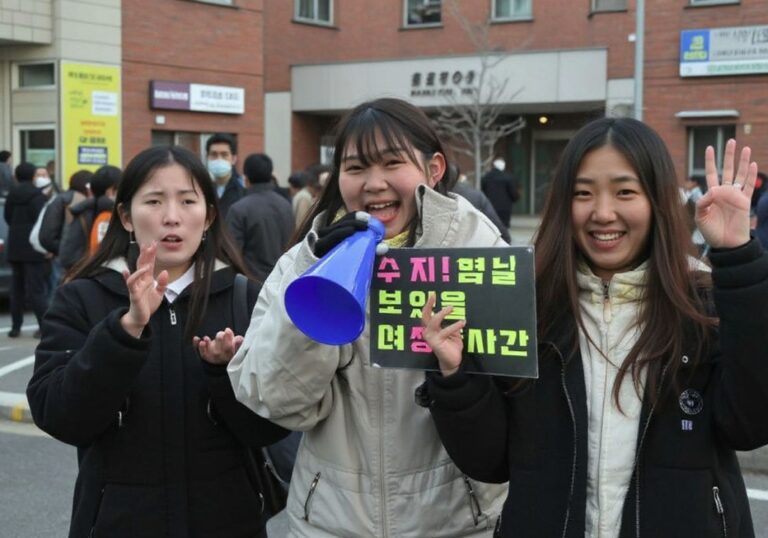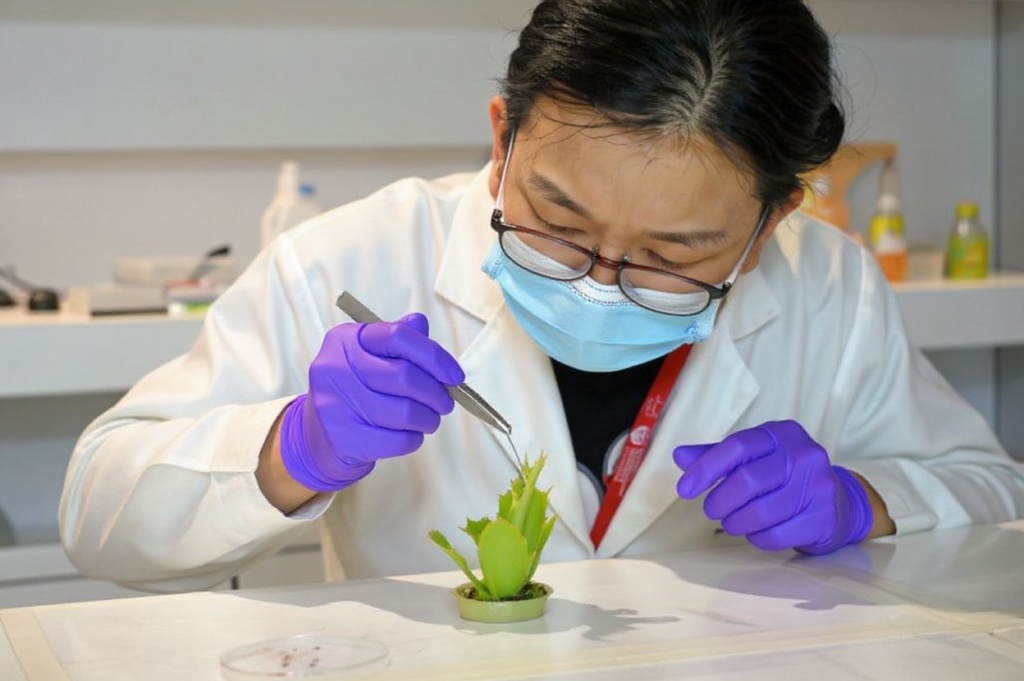
Everyone wants the best education, and they’re willing to pay loads, spend a lot of time and even move countries to find the best education system in the world for themselves or for their children.
The Organisation for Economic Co-operation and Development (OECD) has projected that the international student population is likely to reach 8 million by 2025.
But here’s the question – where are they going?
Should they pursue the latest degrees in demand – such as artificial intelligence – in countries like China or the US?
Perhaps they’re looking for countries with free or affordable PhD programmes, or places where they can gain citizenship easily after graduation.
Some are looking for countries with the best education system in the world – a search that is arguably more complex than it seems.
Let’s explore.
 Does the best mean having elite institutions like Harvard University?
Does the best mean having elite institutions like Harvard University?
What does it mean to have the best education system in the world?
There are many reasons why people want to study in countries with the best education system in the world.
Perhaps you’re keen to study in an academically excellent institute. Alternatively, you want to raise intelligent children and send them to good schools that give them ample opportunities to pursue their interests and dreams.
Another factor is that the quality of a country’s schools is closely linked to its economic status and overall well-being. Some countries even offer free education to their citizens and international students.
Other factors, such as quality of living, teacher-student ratio and availability of public resources for schools and universities, matter, too.
But obviously, this is a generalisation – in reality, being rich doesn’t merit a country with the best education system in the world.
Instead, some people choose to determine which countries have the best education system in the world using PISA scores.
Is the best education system in the world determined by PISA scores?
The Programme for International Student Assessment (PISA) tests 15-year-old students in dozens of countries to apply reading, science, maths and other skills to real-life problems.
Taking place every three years, the PISA results include data on how students perform at different levels, their attitudes towards learning, their family backgrounds and other learning experiences.
Done every three years, it unearths the strengths and weaknesses of a country’s education system, which usually spurs them to take measures to improve.
So, it’s not uncommon to use PISA scores to judge a country’s education system. For example, you may weigh how smart a child in the US is doing compared to one in India through PISA scores.
However, PISA scores are widely used and carry weight, there have been several criticisms and debates surrounding them. This includes:
- The narrow focus: PISA only assess students based on reading, mathematics and science, which does not capture the full range of knowledge and skills that students need.
- Puts pressure on students: PISA scores are often used to compare and rank countries, which can put pressure on students, teachers and education systems.
- Not all students take part in the tests, which then skews the results.
 The US is renowned as a country with the best education system in the world.
The US is renowned as a country with the best education system in the world.
The best education system in the world: 10 countries to consider
The following countries are models of the best education system in the world for the following reasons:
- It has top-ranking universities, as determined by Times Higher Education or QS. This is a reflection of older students doing well academically.
- Its younger students are reading and counting well too, as seen from their performance on international education tests, such as but not limited to PISA
- It has graduates who have produced innovative products or services.
- There is a national belief in the importance of education, which can be seen through big investments in its schools and teachers, among others.
US
Many believe the US, a global superpower, has the best educational system in the world. And they’re not wrong – just look at the Ivy League.
The US has always been a top destination for international students. The country is home to almost 4000 accredited colleges and universities; no other country offers this same capacity – at least, not yet.
US universities are home to many Nobel Laureates, and are often in the top 10 of global rankings. Students have opportunities for up to three years of post-graduation work experience, the ability to access the world’s most innovative labs, and the academic freedom to pursue study in many fields of interest.
Top-ranking universities according to the 2025 QS World University Rankings include:
- Massachusetts Institute of Technology (MIT) (#1)
- Harvard University (#4)
- Stanford University (#6)
- California Institute of Technology (Caltech) (#10)
UK
Similar to the US, the UK is a powerhouse of excellent universities. You’ll find the prestigious Russell Group here, consisting of 24 world-class research-intensive institutes.
What kind of research, you may ask? It’s the kind that’s finding treatment for ovarian cancer, discovering the causes behind obsessive-compulsive disorders (OCDs), shedding light on the origins of animals, and more.
There’s a well-known quote about education among Brits: “Education isn’t the filling of a pail but the lighting of a fire.”
The sparks are evident in the 2025 QS World University Rankings:
- Imperial College London (#2)
- University of Oxford (#3)
- University of Cambridge (#5)
- UCL (#9)
 Australia is at the top of the list for the best educational system in the world.
Australia is at the top of the list for the best educational system in the world.
Australia
Although often overshadowed by Oxbridge and the Ivy League, Australian universities are still among the world’s best.
According to Jessica Turner, CEO at QS, “Australia has a remarkable concentration of high-quality universities with exceptional breadth, resulting in 7% of the world’s top 50 and top 100 ranked subjects, which is the third-highest proportion among all ranked higher education systems.”
Australia’s educational institutions rank well in terms of student satisfaction, employability, quality of life and sense of student community, with Melbourne and Sydney ranking among the top five best cities for students to study in.
Top performers are:
- The University of Melbourne (#13)
- The University of Sydney (#18)
- The University of New South Wales (UNSW Sydney) (#19)
- Australian National University (ANU) (#30)
Canada
According to Andreas Schleicher, the OECD’s education director, Canada’s schools and universities trump others as its “big uniting theme is equity.”
This means that no one’s left behind.
Speaking to the BBC, Schleicher says there is a strong sense of fairness and equal access – and this is seen in the high academic performance of migrant children.
They go on to thrive at excellent universities, such as these within the 2025 QS World University Rankings:
- University of Toronto (#25)
- McGill University (#29)
- University of British Columbia (#38)
- University of Alberta (#96)
China
China has one of the most extensive education systems in the world, with 270 million students and 16 million full-time teachers in over 500,000 schools across the country.
The country is highly committed to a rigorous, perfect education system to reinforce its future economic and social development, and offers multiple pathways for its students.
Students can opt for standard academics and take the GaoKkao – known as one of the hardest examinations in the world – or join a vocational school to receive training. With more than 12 million candidates taking the Gaokao each year, the competition is fierce. Less than 0.25% of students qualify to join some of China’s most elite colleges.
You’ll find top-ranking institutions such as:
- Peking University (#12)
- Tsinghua University (#14)
- Fudan University (#34)
- Zhejiang University (#42)
Germany
Some of the world’s greatest inventions originated in Germany, such as the printing press, helicopters, and even the good old coffee filter. So, it’s not a stretch to assume that the country produces well-educated, brilliant individuals.
The country also believes that education should be accessible to all. That’s right – education in Germany is free for both domestic and international students, which makes both studying abroad there or settling down with a family very enticing options.
Rest assured that free education doesn’t mean that the quality is compromised. Germany is still home to one of the best education systems in the world, with many universities in the top 100 globally.
Top-ranked institutions include:
- Technical University of Munich (#28)
- Ludwig-Maximilians-Universität München (#59)
- Universität Heidelberg (#84)
- Freie Universitaet Berlin (#97)
Finland
You’ll find one of the best education systems in the world here. There is one underlying factor that sets the foundation for success, and that is Finland’s early childhood education, where children grow in stress-free environments using play-based approaches.
Aside from that, Finland offers free education, even keeping universities state-funded for international students. To top it all off, student healthcare is free in this beautiful country. No wonder Finland is one of the happiest countries in the world.
Top-ranked institutions include:
- Aalto University (#113)
- University of Helsinki (#117)
 Luo Yifei, PhD student at Nanyang Technological University’s (NTU) School of Materials Science and Engineering, attaching an electrode on the surface of a Venus flytrap plant at a laboratory in Singapore, as scientists develop a high-tech system for communicating with vegetation.
Luo Yifei, PhD student at Nanyang Technological University’s (NTU) School of Materials Science and Engineering, attaching an electrode on the surface of a Venus flytrap plant at a laboratory in Singapore, as scientists develop a high-tech system for communicating with vegetation.
Singapore
Lee Kuan Yew, the country’s first prime minister, has strong values on education that have helped propel the country towards the best education system in the world. Discipline, perseverance and resiliency – these values have shaped Lee’s goals “to develop Singapore’s only available natural resource, its people.”
The country focuses on bilingualism and science, technology, engineering and mathematics, and generous scholarships are regularly doled out to enable its best and brightest to enter some of the world’s premier universities.
Students also demonstrated exceptional mathematical skills, problem-solving abilities, and a strong foundation in numeracy in the latest PISA assessment.
Despite being a small country, two of its universities rank within the world’s top 20:
- National University of Singapore (NUS) (#8)
- Nanyang Technological University, Singapore (NTU Singapore) (#19)
South Korea
In South Korea, education comes first. Nine out of 10 elementary school students receive private tutoring after school, and eight out of 10 high school graduates go on to college.
This is thanks to a Confucian legacy revering education — one that’s enabled it to perform very well in the PISA. Its students have achieved high rankings in PISA since their participation in the assessments began in 2000.
South Korea is also home to several prestigious universities known for their academic excellence, research output, and global reputation. Here are some of them:
- Seoul National University (#29)
- KAIST – Korea Advanced Institute of Science & Technology (#42)
- Pohang University of Science And Technology (POSTECH) (#71)
- Yonsei University (#73)
 France is known as the city of love and one of the countries offering the best educational system in the world.
France is known as the city of love and one of the countries offering the best educational system in the world.
France
In France, education is one of the most basic rights of its citizens. The country made it compulsory for those between the ages of six to 16 to receive education.
Some of its universities are known to rival MIT (University of Paris-Saclay), and the country is also home to one of the world’s finest engineering schools (Ecole Polytechnique) in the world.
Apart from the US, France has more field medal-winners in maths than any other country. It’s an award given to two to four mathematicians under 40 at the International Congress of the International Mathematical Union (IMU) every four years. Think of it as the Nobel Prize for Mathematics!
Top universities include:
- Université PSL (#26)
- Institut Polytechnique de Paris (#48)
- Sorbonne University (#60)
- Université Paris-Saclay (#69)
Disclaimer: This article was last updated on February 25, 2025.










